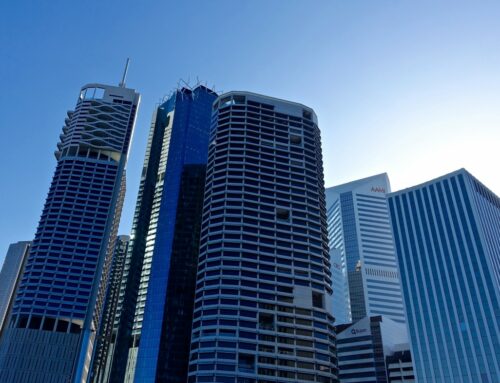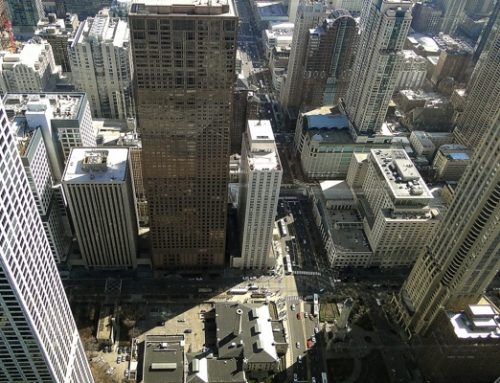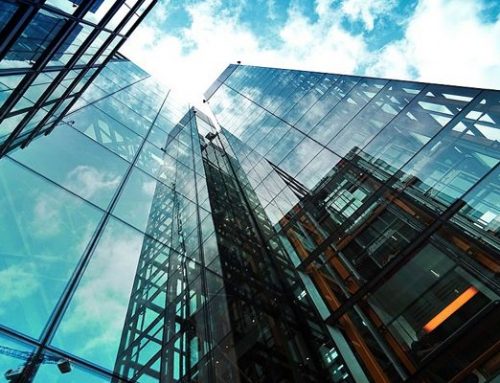Even if you have no idea about polycarbonate roof advantages disadvantages, you’ve already seen them used in numerous commercial and industrial properties.
You might have seen these opaquely colored lobby roofs in some hotels, malls, and even corporate buildings. Polycarbonate roofs often come in a blue or bronze color.
Polycarbonate roofs are strong, plastic materials stronger than PVC. The hybrid material can withstand high temperature and reflects UV rays. Most reputable contractors use them as roofs for public structures and commercial applications in the form of conservatories, patios, and decking areas.
After reading this guide, you’ll know:
- What makes polycarbonate roofs advantageous for commercial property owners
- And why they have to keep in mind some disadvantages to make the right decision
Polycarbonate Roof Advantages Disadvantages
Advantages
Virtually Unbreakable
When asking about polycarbonate roof advantages disadvantages, one of its biggest advantages is it is stronger than traditional roofing panes.
True enough, glass and expensive fiberglass is the choice material for stylish skylights and lobby shades. However, using polycarbonate roofing allows the same level of sunlight into the structure but with a virtually unbreakable material.
Manufacturers of bulletproof windows, riot shields, and bank windows use polycarbonate because of their virtually unbreakable strength. Therefore, hailstorms can only cause cosmetic damage against polycarbonate panels.
UV Reflective
Similar to conventional roofing materials, one distinct polycarbonate roof advantages disadvantages is its UV reflective capabilities.
Polycarbonate roofs can block 100% of harmful UV rays and reflect them away from the property. However, it can let 90% of natural light to come into the structure providing natural lighting for offices or commercial properties.
Polycarbonate roofs as skylights offer these benefits only if they’re installed in the best and proper way possible
In contrast, glass panes only block 25% of UV rays. True enough, you’re not only making the best cosmetic choice with polycarbonate roofs, but you’re also making a practical one.
Offers a Variety of Colors
If a clear-white glass-like appearance is suitable for your property, then you can find this type polycarbonate material almost anywhere. However, if you prefer something with character, then you’ll find this a great polycarbonate roof advantages disadvantages.
Aside from its glass-window imitation, polycarbonate roofs and windows come in shades of blue, bronze, opal, silver, and other colors depending on its manufacturer. Each window type offers the same durability and UV blockage and reflective capability. Therefore, your final decision comes down to whether it fits the aesthetic of your Toronto property.
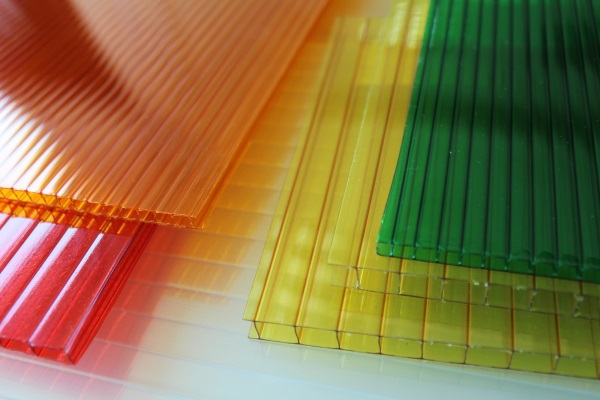
Aside from blue, opal, and brown, polycarbonate materials come in a wide range of colors
High Temperature Resistance
One of the most distinct polycarbonate roof advantages disadvantages for Toronto commercial properties is its high temperature resistance. These roofing materials will withstand any harsh environment and last for half a century on par with standard commercial property construction materials.
Polycarbonate roofs will not bend or break when exposed to consistent heat and cold. Because they’re made of reinforced plastic, they will not receive damage from ponding.
In turn, these capabilities allow polycarbonate roofs to last without showing signs of fading, yellowing, or discoloration.
Can Be Used Almost Anywhere
One of the best polycarbonate roof advantages disadvantages is they are lightweight. This characteristic allows their easy installation almost anywhere. While most Toronto property owners would choose polycarbonate windows, they make long-term and durable roofs too.
If you can afford it, you can have your entire commercial property have a polycarbonate roof. It will not only save you from utility bills with effective insulation. However, you will have a long-term roof that the sun or any type of weather can wear out for half a century or more with effective maintenance.
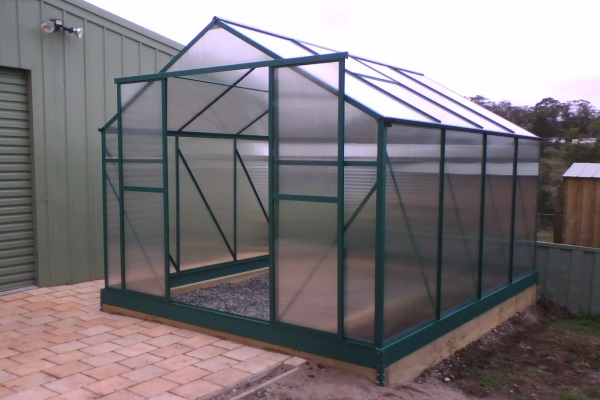
Polycarbonate is often used for greenhouse construction such as this one
Disadvantages
Expensive
One of the biggest drawbacks of polycarbonate roofs and materials is it is expensive. Commercial property owners will find them priced similarly to metal and architectural shingle roofs.
Single-ply flat roof membranes advantages are similar to polycarbonate roofs. However, polycarbonate materials undergo multiple stages of layering and reinforcement to have the longest lifespan possible. However, this particular process adds to their final product cost.
You can look at $10-16 per polycarbonate roof square foot. Therefore, it will cost about $1,000-$1,600 per square of a polycarbonate roof. Looking at it another way, you’re making an excellent long-term investment on a virtually unbreakable and strong roof.
Vulnerable to Surface Damage and Dents
In the debate concerning polycarbonate roofing advantages and disadvantages, the durability factor of these materials make them excellent investments. However, the cosmetic damages they receive can be extensive over time.
Polycarbonate roofing is still plastic. Therefore, if hailstones or boots scratch their surface, it will remain permanent. During hailstorms, the impact cracks will remain on the windows, and this will require expensive repairs or replacement.
Scratch-proof material-reinforced polycarbonate roofs often trumps the debate of the advantages and disadvantages of polycarbonate roof. However, they drive the price of these roofing materials even more than the average.
Requires a Special Cleaning Solution
Because they are vulnerable to scratches, polycarbonate roofs and materials require a special cleaning solution. Any cleaning material with abrasives, alkaline, and solvents will damage the roof material by peeling its surface or making it thin each cleaning.
In turn, the cleaning will reduce the lifespan and durability of polycarbonate materials. True enough, you’ll need these roofs clean regularly especially if you use them in your lobby. Therefore, you’ll need to invest in special cleaning solutions manufacturers can prescribe to keep your roof healthy and clean.
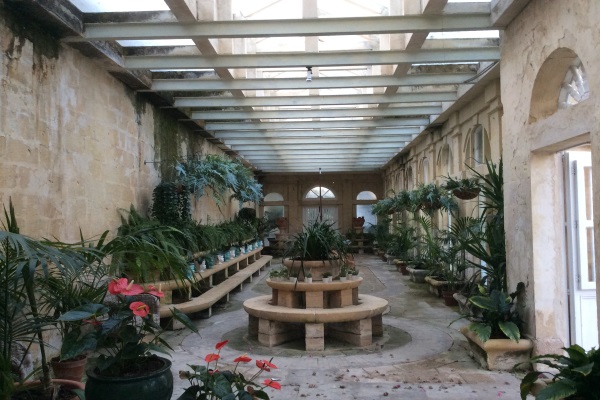
Polycarbonate roofs are often used on corporate gardens or lobby areas for added aesthetic improvement. Therefore, they will require regular cleaning.
Not Environmentally Friendly
Polycarbonate roofs are artificial materials with a manufacturing process that endangers the environment. To reinforce their layers, polycarbonate roofs undergo extreme heat processing.
In addition, it combines with phosgene and chlorine. Both chemicals can cause sickness in humans. Therefore, employee safety is another factor that adds to the manufacturing process, and its already-expensive price tag.
Wrapping Up
Polycarbonate roofing is an exceptional roofing material. However, there are better alternatives to polycarbonate roofing in terms of expense and material durability.
For example, single-ply commercial roofs cost about 60% more affordable than polycarbonate roofs and can last for 20-30 years. However, they can endure foot traffic without any fears of dents, unlike polycarbonate roofs.
In addition, they offer better insulation than polycarbonate roofs especially if you use Firestone or TTR® systems, which are affordable yet long-term commercial roofing solutions.
Cox Roofing specializes in commercial roof repairs and is a licensed Firestone and TTR® roofing contractor. Firestone products are well-known for their long-term durability and lifespan parallel to that of polycarbonate roofs. Consider having us install them on your commercial property today!


